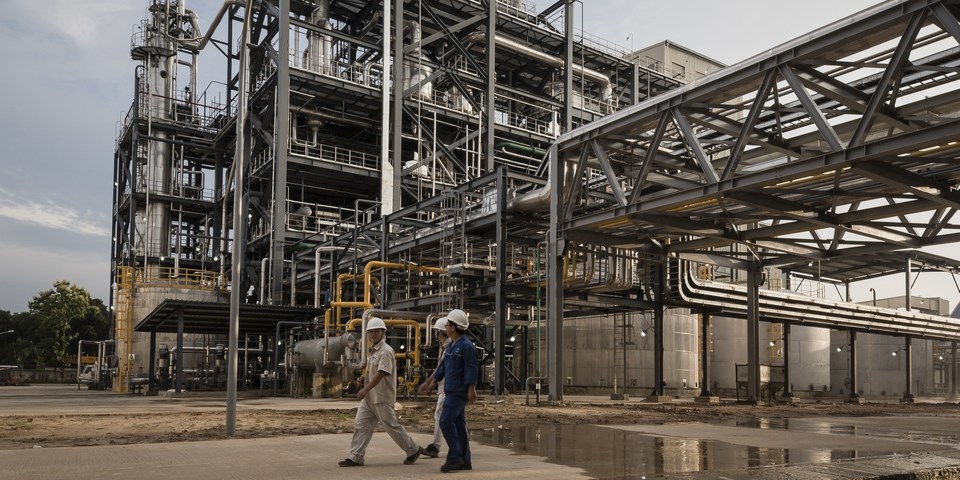I’ve started by asking Mr. Ofei about his function and the responsibilities this entails. “As the Materials & Corrosion Specialist for Stamicarbon, my function is split into two main roles. The first is working on innovation projects, where I manage R&D on materials and corrosion. For example I was involved in the development of Safurex® Star, a superduplex stainless steel developed in collaboration with Sandvik for use in the highly corrosive urea synthesis environment. Another aspect of my role is to develop, maintain and record knowledge on materials & corrosion.
Finally, I give trainings to customers and presentations at external symposia within the domain of materials & corrosion.” When asked what corrosive processes he is involved in, Mr. Ofei replied: “We work at preventing the following corrosive processes: general/uniform corrosion, condensation corrosion, strain induced intergranular corrosion (SIIC), pitting and crevice corrosion, flow accelerated corrosion, corrosion under insulation, chloride stress corrosion cracking and nitrate stress corrosion cracking.”
Material selection
When questioned as to which grades of stainless steels and/or duplexes Mr. Ofei commonly works with, he replied: “As a standard, only Safurex® (UNS S32906), a proprietary superduplex stainless steel, is employed as the material of construction for all wetted parts in the synthesis section. For less corrosive applications, lean and medium duplexes (X2CrNiMoN22-5-3 and X2CrNiMoCuN25-6-3) are used. We also use the X2CrNiMo25-22-2, 304 and 316 grades of austenitic stainless steels when the service environment requires it.”
“We use lean duplexes in ammonium carbamate environments for temperatures of approximately 104°C, and our experience with them with respect to corrosion resistance is positive. They perform well under such service conditions,” Mr. Ofei explains.
Facing corrosion issues
CRA challenges
In terms of procurement, Mr. Ofei said: “In Stamicarbon we have a procurement department in place to handle all matters related to purchasing. However for Safurex® which is a proprietary material, we have a single source supplier.” “In my role, I am usually not in direct contact with CRA suppliers, however, I have learned from equipment manufacturers that lead times for delivery are usually long,” explains Mr. Ofei.
“This means projects have to be planned well ahead of time and emergency replacements can be difficult to arrange. However, for the HP urea equipment the lead time of carbon steel forgings (tubesheet, hemihead) is longer compared to Safurex®; Safurex® is almost never on the critical path!” “Looking to the future, I would like to see further optimisation of lean duplexes to improve corrosion resistance through clever heat treatment regimes. This is because, there is a limit to how far corrosion resistance can be improved by alloying, therefore investigating how corrosion resistance can be improved by strengthening the microstructure through heat treatment is important.”


